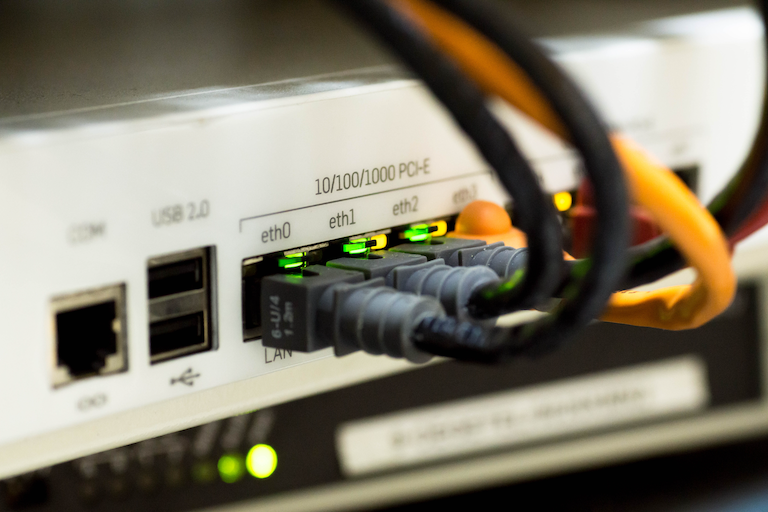
4 Reasons Why Your Electronic Data Interchange Isn’t Working
Venkat Obillaneni is Aezion Cloud Data Engineer and Data Practice Lead.
Electronic Data Interchange (EDI) allows for the computer-to-computer exchange of data and documents, giving way to automated, paperless processes. We’ve already discussed how automating data flow is a crucial component in modern data architecture as it enables management and insights at scale. However, data automation is just the tip of the iceberg.
As you go down the path to try to automate the flow of data throughout your organization, you’re going to need the right EDI solution—one that integrates with your partners in the supply chain, matches your security requirements and fits your budget.
Finding the best EDI solution for your business might just seem like you’re searching for a needle in a haystack and, oftentimes, it’s more valuable to identify what isn’t working with your current solution to help you figure out what you need going forward. So, let’s dive into four common pitfalls organizations face with the wrong EDI software.
#1 Underestimating Your Supply Chain
Underestimating the complexity of your supply chain is a common pitfall and it’s also one of the worst because it puts you on the path to choosing an Electronic Data Interchange solution that doesn’t fit your needs. Your decision should begin with a thorough analysis of what your business needs on the technical side, which allows you to choose between the three types of EDI solutions:
- Direct EDI: Also known as point-to-point EDI, this solution creates one connection between two businesses. You’ll get the most control with this setup and it can also be cost-effective, but it’s an on-premise solution that requires in-house experts to launch and maintain it. This type can also be difficult to upgrade in the future and it can be tough to accommodate multiple standards or protocols.
- EDI via VAN: A Value Added Network (VAN) is a private, third-party network used to exchange documents. Using a VAN as part of your EDI solution can provide extra flexibility. It also allows you to outsource the maintenance since a third party is managing the network where the exchange takes place.
- Web EDI: If you want to completely simplify data exchange, a web EDI gives users a place to input information that the system then maps into standard EDI payloads. This is also a third-party solution and it’s useful for businesses with limited EDI knowledge.
Which type of EDI you choose will affect maintenance, costs, customizability and countless other factors that can make or break your EDI solution—and that’s just the tip of the iceberg. Failing to properly analyze your business needs in advance of choosing a solution can lead you to choose something far more rigid or far more hands-on than you require.
Remember, Electronic Data Interchange is not a “thing,” it’s a methodology that guides transmission protocols and standards. The EDI solution you choose has to align with your business’s requirements and it needs to meet the unique needs of your supply chain.
#2 Misunderstanding EDI Costs
When done right, Electronic Data Interchange can streamline logistics and help you work more effectively, but at the end of the day, it all comes down to cost savings. However, launching an EDI solution can be expensive, especially if you don’t plan correctly and you end up facing a myriad of issues during implementation. Choosing the wrong solution will also cost you big time as you’ll need to work out kinks in the system or perhaps replace it altogether. These things don’t mean that EDI can’t be profitable for your business, but they do mean that it will take longer to see the payoff.
The additional costs you might incur throughout the various stages of launching an EDI solution include the development of skills, finding a provider, digitizing your data, rolling out the EDI to your partners and potential reputation costs if any of these elements doesn’t go to plan. Avoiding these costs or minimizing them, comes down to strategy and planning. Businesses should clearly define their goals, in-house skills, partner relationships and other crucial aspects before moving forward.
#3 Ignoring Security
Oftentimes, businesses run into resource-intensive problems when they fail to think about security requirements from day one. If you make security an after-thought, the cost of going back to patch up the holes is going to be large, not to mention the risks and compliance issues you’ll face until then.
Electronic Data Interchange connects you more closely with your supply chain partners, which is great for business but represents a security threat. You’ll be sharing information from internal systems and vice versa, which can complicate data privacy compliance and cultural expectations. In reality, you were already sharing a lot of this information with your partners, but you’re now doing it electronically, which requires proper encryption, storage and policies on both ends.
Consider your business’s security requirements up-front and then be honest about the resources that you have available to address your concerns. In many cases, businesses don’t have enough in-house resources to manage an on-premise EDI solution, train users and mediate with all of their partners to sync policies and requirements.
#4 Compromised Datasets
Even if you have a successful implementation with an EDI software that fits your needs, you can still run into big challenges if the data within your framework simply isn’t up to standard. As you begin using your Electronic Data Interchange software, your existing data will be tested for quality, completeness, and accuracy.
However, most EDI solutions deal with data in a format that humans were not intended to understand, which means finding and fixing errors is that much more complicated. Manual error detection is so time-consuming and difficult that it’s rarely recommended. Yet, starting with bad data can mean failure, especially if you don’t identify the problem soon enough.
The fact is, “bad” data originates when the order itself is created. It might mean an invoice is created for an out-of-stock item or an invoice is duplicated or an incorrect price is shown. Once you have your EDI solution up and running, the benefit is improved data quality since everything is automated and there’s no human error. However, when you first launch your EDI system, it’s going to use existing data and that data must be correct. So, check the quality of your data at the source, like in your ERP and the ERP of your trading partners.
Invest in a Better EDI Solution
Next Steps
Is your business trying to find the right EDI solution? Are you on the path to implementing modern data architecture (MDA), but running into challenges? It can seem like making use of data automation holds so many conveniences and advantages, but getting there can be a struggle.
At Aezion, we’ve helped countless businesses align their business goals with the perfect software solutions. Contact us today to find out how our team of experts can help your business unlock the power of its growing datasets.
Venkat Obillaneni is Aezion Cloud Data Engineer and Data Practice Lead.
Search
Subscribe To Our Blog
Enter your information to subscribe to the Aezion blog digest.
Recent Posts
- What are the 4 Types of Business Analytics? March 13, 2024
- The Benefits of Web-Based Systems for Business March 12, 2024
- 5 Types of Cloud Computing: What are They and How do They Work? November 20, 2023
- The Five Stages of Business Intelligence (BI) November 06, 2023
- What is QA Testing: Best Practices for Quality Assurance March 09, 2023
Archives
Categories
- Articles
- Artificial Intelligence
- Blockchain
- Business Intelligence
- Custom Software
- DApp
- Data Analytics
- Data Management
- Dedicated Development Teams
- Digital Marketing
- Docker Containers
- Ethereum
- Machine Learning
- Mobile Applications
- Natural Language Processing
- News
- Process Automation
- Python
- Smart Contracts
- Software Quality
- Stratis





